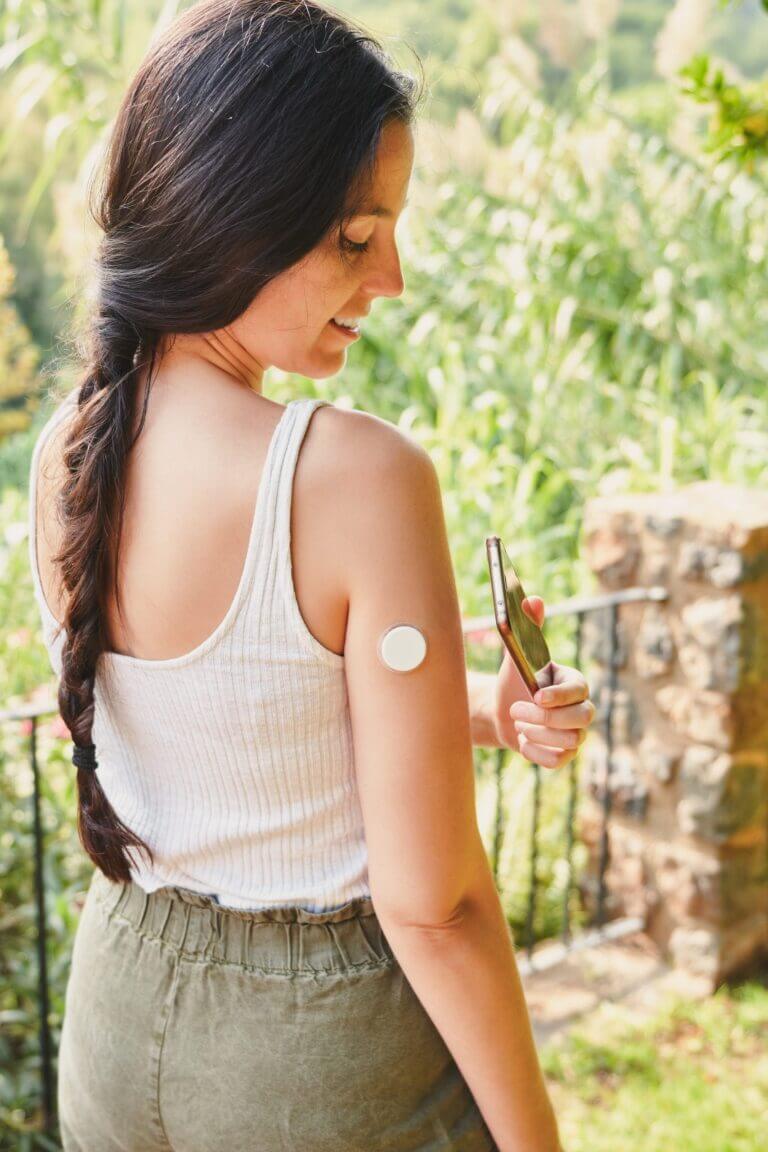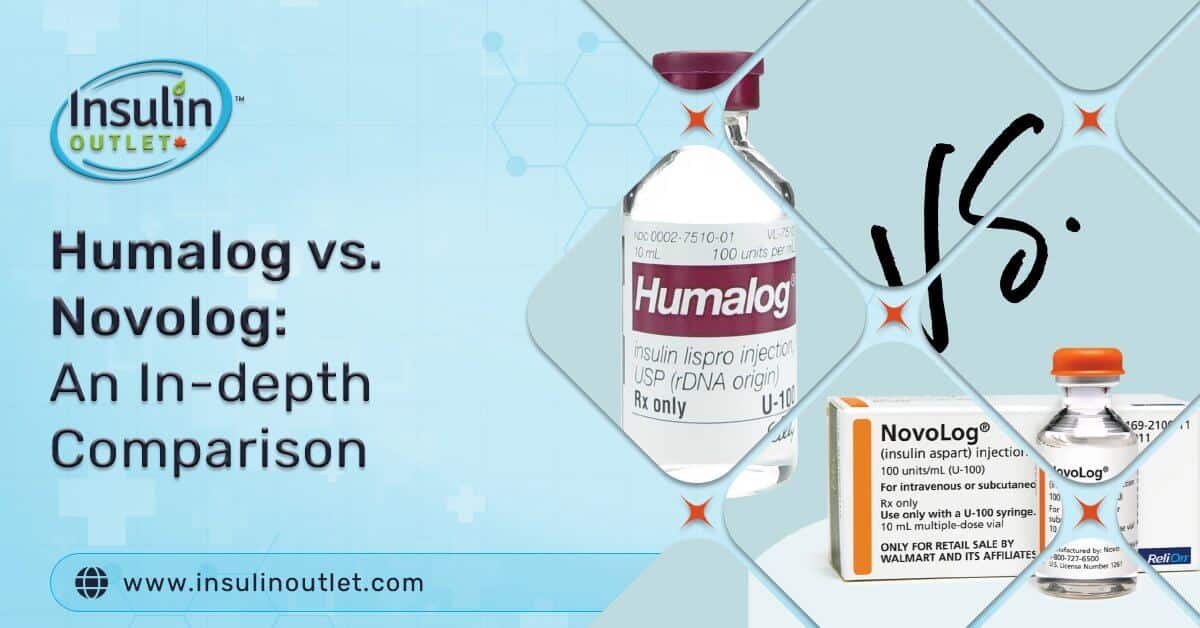
Thanks to the advancements in medicine, we have reached a point where living with diabetes is completely manageable, as long as you follow the guidelines given to you by your doctor. But don’t be fooled – the research is nowhere near being concluded, as new inventions are constantly getting introduced to make living with this condition as easy as possible.
One such invention is called a diabetes patch. There are actually two types of diabetes patches – a CGM sensor patch and a smart insulin patch. Both of them have different functions and should not be confused with each other. But what are they, and how do they work? That’s what we’ll explore in this article.
Table Of Contents
ToggleWhat Is a CGM Sensor?
CGM stands for continuous glucose monitoring. This type of diabetic patch, as you can guess from the name, is responsible for the automatic reading of your sugar levels all around the clock. This system significantly minimizes the need for finger pricks and a blood glucose monitor, making more regular monitoring of your sugar level easier. A CGM sensor can be used in people with either type 1 or type 2 diabetes.How Does a CGM Sensor Work
It’s actually a very straightforward process. First of all, you need to place the sensor under your skin – usually, it’s on the arm or the belly. Use the applicator for that – it won’t take more than a few minutes. The sensor will stick to your body thanks to adhesive tape. That’s pretty much it! You will need to repeat this process every 7 to 14 days, depending on your device. Once the sensor is in, it will measure the sugar levels in regular intervals, typically every 5 minutes. The sensor has a filament that contains a glucose oxidase enzyme, which reacts with glucose. The reaction causes a small electrical current, the strength of which corresponds to the amount of glucose present. The data can be sent to a number of devices, but most people prefer to send it to their phone so that they have easy access to data and can check if their glucose levels aren’t getting too high or too low. Important: While a CGM diabetes arm patch measures your glucose levels, it does not measure the glucose in your blood – instead, it measures the sugar in the interstitial fluid, which is the fluid between cells. That’s why finger pricks cannot be completely forgone – those measure the glucose levels in your blood.Why Use a CGM Sensor
There are a few reasons why this type of diabetes patch can be useful for those with diabetes, but the most important one is that it gives you a bigger picture of your condition – because of its constant monitoring, it can tell you exactly what causes your glucose levels to rise or fall, allowing you to better adjust your diet. A CGM sensor can also alert you if your glucose level is getting too low or too high, even when you don’t have a blood sugar level monitor close by.
FDA-Approved CGMs
FDA-Approved CGMs are:- Dexcom. Dexcom is available in the U.S. for people two years and older who have diabetes. The adhesive backing is placed on the abdomen for ten days. A transmitter clicks into a plastic saddle to send data to a receiver or your phone. When the ten days are up, you remove the adhesive and replace it with a new one. The transmitter is reused each time.
- Freestyle Libre. There are two versions of Freestyle Libre. The Freestyle Libre 2 is approved for kids four years and older; the Freestyle Libre 14-day CGM is available for all people with diabetes. Like Dexcom, the device is placed on the body and removed after a certain number of days. The Freestyle Libre should be placed on the back of the upper arm and released every 14 days. A glucose reading is displayed every minute.
- The Guardian Connect System. This system patch is worn on the stomach or arm and is changed every seven days. The Guardian Connect System is only recommended for people 14 years to 75 years old who have diabetes.
What Is an Insulin Patch
A smart insulin patch, also known as a glucose-responsive insulin patch is another type of diabetes patch. Contrary to a CGM sensor, which measures glucose, an insulin patch is an alternative to insulin injections. Thanks to it, delivering insulin to your body is easier and quicker. Since both types of diabetes involve issues with the pancreas either not producing any insulin or making insulin that your body doesn’t respond to, an insulin patch can be used by those with both type 1 and type 2 diabetes.How Does an Insulin Patch Work
Again, it’s pretty straightforward and almost the same as the case of a CGM sensor. You place the patch on your body, either on your stomach or your arm, and an adhesive keeps the patch in place. You control it through a compatible device – a wireless controller or a phone. An insulin patch delivers insulin regularly throughout the day so that your blood glucose levels stay stable at all times. When it comes to how often it needs to be changed, it all depends on the device you’re using and its capacity. Typically, however, you will need to replace it every one to three days.Why Use an Insulin Patch
The main reason is that it makes administering insulin a lot more comfortable – no need for a traditional insulin pump that you need to carry around that uses thin tubing. Instead, the insulin and the cannula are both placed in a pod that sits on your skin. What’s more, doses administered using an insulin patch tend to be more precise, not to mention continuous, as the patch delivers insulin throughout the day and night, ensuring stable blood sugar levels at all times and minimizing the chances of an accidental insulin overdose.FDA-Approved Insulin Patches
There are currently five FDA-approved insulin pumps:- OmniPod Insulin Management System. This FDA-approved system delivers insulin directly from a patch with no tubing. The OmniPod can be programmed for individualized basal rates, has a bolus calculator, and stores insulin delivery data. Each pod expires after three days. Although it was designed for people with type 1 diabetes, it can also be used by people with type 2 diabetes.
- V-Go. V-Go insulin delivery system is designed for adults with type 2 diabetes who require insulin. The disposable device delivers a continuous, subcutaneous infusion of rapid-acting insulin. After applying the patch, you can quickly press a button to insert the delivery needle. Meal-time insulin or insulin doses to correct out-of-target blood sugar levels are initiated when you press a button on the device. The strong adhesive sticks to the skin for 24 hours, even if it’s wet. It comes in different prescription levels — V-Go 20, V-Go 30, V-Go 40 — that refer to the amount of insulin delivered at a continuous preset basal insulin rate over 24 hours. The device is discarded after being worn for 24 hours.
- Tandem and Medtronic connect an electronic control and insulin reservoir device to the infusion set with tubing. Both pumps have options for communicating with a CGM.
- CeQur Simplicity. CeQur Simplicity is a three-day insulin patch that uses rapid-acting insulin. It’s designed for people with type 2 diabetes and holds up to 200 units of insulin. This can be used to correct an above-target blood sugar or for mealtime insulin dosing. You can do this by squeezing the button on the side of the patch to administer. Each squeeze delivers two units of insulin.
The Bottom Line
Living with diabetes can be challenging, but it doesn’t have to be. There are many innovations that make dealing with this condition easier for you, and diabetes patches are just one of those. A CGM sensor can give you a bigger picture of the spikes and dips in your glucose levels, while an insulin patch delivers insulin at regular intervals. If you haven’t tried them yet, you should give them a go – there’s no commitment involved, so if you decide that it’s not something you see yourself sticking to, you can stop using it at any time. Who knows, though, you might find that the solution actually works wonders, and it becomes a part of your diabetes management. For more information about diabetes and treatment, you can visit our resources page. Remember – diabetes is manageable, but educating yourself is a major part of it.Share:












